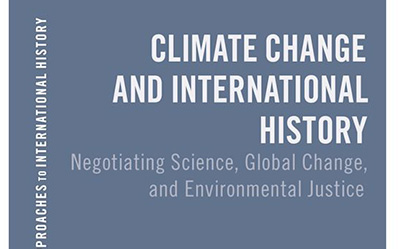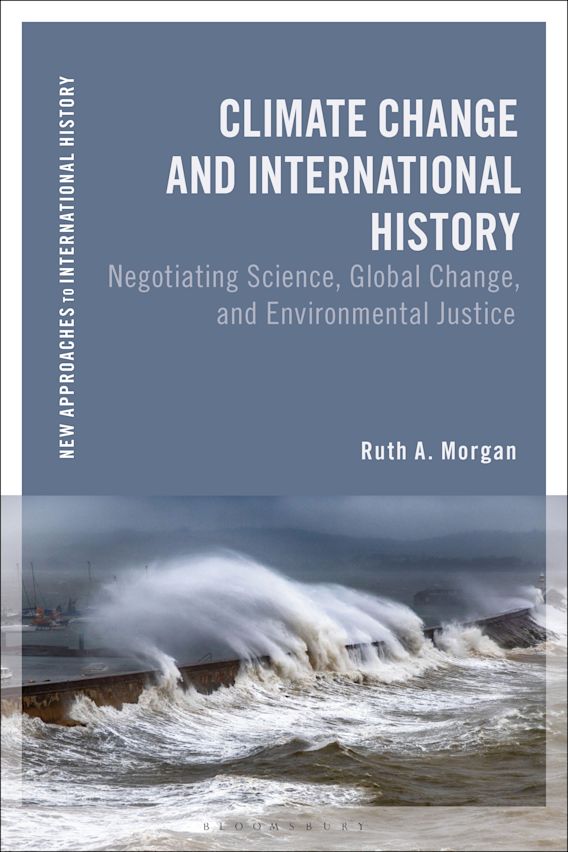- Free Article: No
- Contents Category: Environment
- Review Article: Yes
- Article Title: Internationalised solutions
- Article Subtitle: Globalising climate change
- Online Only: No
- Custom Highlight Text:
In 2020, with Katie Holmes and Andrea Gaynor, Ruth A. Morgan co-authored ‘Doing Environmental History in Urgent Times’, an article which was published in a dedicated ‘In urgent times’ edition of History Australia. With more than 8,800 views since its publication, which coincided with the first Covid lockdowns, the paper has gone on to become that journal’s most read article in its twenty-year lifetime. In it, the co-authors staunchly called for ‘barbed and incendiary histories that hold wrongdoers to account and keep watch over the present’. History writing is an inherently political act, and they stressed – in italics, no less – ‘there is no justice without history’. Four years on, there remains an ever-accelerating and palpable urgency to the work of history writing. With coruscating prose and assiduous scholarship, Climate Change and International History adds its voice to this chorus.
- Featured Image (400px * 250px):

- Alt Tag (Featured Image): Harrison Croft reviews ‘Climate Change and International History: Negotiating science, global change, and environmental justice’ by Ruth A. Morgan
- Book 1 Title: Climate Change and International History
- Book 1 Subtitle: Negotiating science, global change, and environmental justice
- Book 1 Biblio: Bloomsbury Academic, $44.99 pb, 280 pp
- Book 1 Cover Small (400 x 600):

- Book 1 Cover (800 x 1200):

In the Introduction, Morgan asks: ‘How did anthropogenic climate change become framed and understood as a problem that warranted the involvement of all states in climate diplomacy?’ When the causes and effects of anthropogenic climate change are distributed so unevenly across the globe, why are all states expected to contribute to finding a solution? Throughout the book, Morgan engages with scientists and their often increasingly frustrated attempts to articulate their data to governments. The debates within the scientific community – for example, the question of a forest’s efficacy in absorbing carbon – are detailed throughout. These chart a complicated, multilayered history that gets at the heart of scientists’ search for factualness, and the obfuscation of those facts by certain governments.
In Morgan’s hands, these competing voices – climate scientists, politicians, NGOs, citizens of cities and whole states under threat by rising sea levels – are all afforded consideration and treated with empathy. Morgan is a steadfast guide along the meandering path of twentieth- and twenty-first-century climate internationalism. Crucially, she always resists the temptation to judge historical actors by present mores. Morgan instead shows the paths taken and not taken; the climate targets ratified and vetoed. This is an important consideration for historians of climate change. Although it can be tempting to draw a linear thread from one climate conference to the next, the historical reality, as Climate Change and International History shows, is full of contradictions, wrong turns, and messiness. In this way, smaller states often sidelined are afforded agency: a much fuller picture can be painted.
Importantly, the book traces changing positions on climate change. In the aftermath of World War II, the Soviets welcomed a warming climate that would supposedly improve crop yields and render northern climes more habitable. Attempts by the United States in the 1960s to artificially increase rainfall in Southeast Asia, ‘to prolong the monsoon season and flood North Vietnam’s supply routes’, demonstrate the cynical violences of climate warfare. In the 1980s, the neo-liberalism of Margaret Thatcher and Ronald Reagan meant that loans from such institutions as the World Bank to postcolonial nations were ‘contingent on recipients’ liberalisation of their economies’. In recent years, fringe climate denialist positions have come to the fore. Each of these momentous chapters in the history of climate diplomacy is underscored by the developments and discussions within the coinciding climate conferences, from Stockholm in 1972 to Kyoto and 2015’s Paris Agreement.
Each chapter opens with a subheading listing the concentration of carbon dioxide in the atmosphere at different periods in time (measured in parts per million), to chilling effect. One is reminded of David Attenborough’s A Life on Our Planet (2020). Though this might risk devolving into a declensional narrative – a depressing tale of failed meetings, futile incrementalism, and unrelenting increases in carbon emissions – Morgan balances her duty to uncover the blameworthy actors of the past with the need for engaging, and not soul-crushing, prose.
The archival material is vast. This is to be expected, given the international nature of the subject. Morgan’s first book, Running Out?: Water in Western Australia (2015), was decidedly localised by comparison. Reflecting her recent work with the IPCC Working Group II in helping to draft its Sixth Assessment report, and research articles on the British Empire and nineteenth-century India, this book points to an increasingly global trajectory in her work. The book is fortified by archival materials from conference proceedings and OECD reports, as well as by contemporary monographs and journal articles attempting to grapple with the subject as it was understood at the time. The truly international scale of the book is best captured by an introductory anecdote, in which a poet from the Marshall Islands presented her work at the opening ceremony of the 2014 UN climate summit in New York. Articulating the impacts of climate change on her culture, her daughter, and her livelihood, the scene is heavy with hope and fear.
Climate Change and International History shows how solutions to anthropogenic climate change became internationalised. This is a complicated and deeply pertinent topic – about a process that, on the one hand, offered smaller states a seat at the table, while at the same time as letting major polluters off the hook. Thus the importance of this work is not easily overstated. With its timeliness, scholarly rigour, and readability, this excellent study contributes substantially to our knowledge of climate science and diplomacy.


Comments powered by CComment